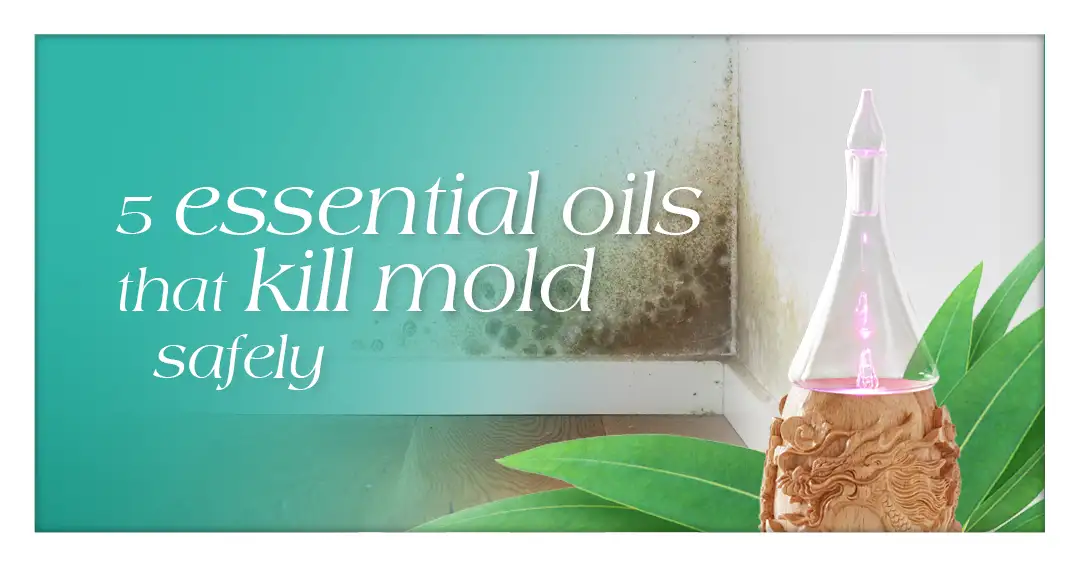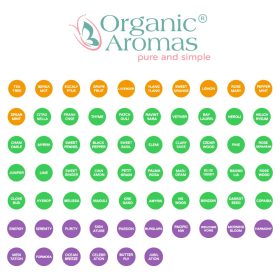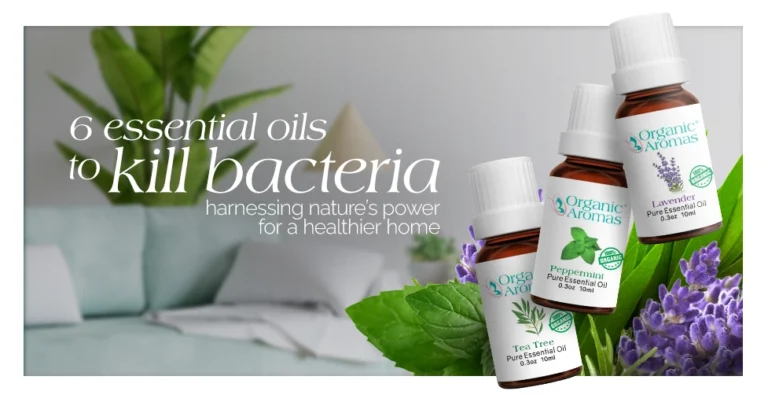5 Essential Oils That Kill Mold Safely
Have you ever sniffed that musty corner in your home and wondered how to kill mold safely?
What if a few drops of pure Tea Tree oil could kill mold and tear mold cells apart the moment they hit the air?
With Organic Aromas’ Magnificent – Nebulizing Diffuser®, you simply mix 15 drops of Tea Tree (a natural antifungal to kill mold and mildew naturally) and 10 drops of Lemon (for bright, zesty freshness) into diffuser. Then the diffuser releases a gentle mist — tiny essential oil droplets to kill mold spores in the air — that ripples through your room, sweeping away spores and odor, no harsh chemicals needed.
Whether you’re looking for how to kill mold without chemicals, kill mold naturally with essential oils, or just keep your air fresh, this simple blend works fast, smells amazing, and keeps your home safe.
Breathe in that crisp, clean scent. Notice the calm that follows.
Next, I’ll share five essential oils that kill mold safely, plus easy mixing tips for each blend. Ready for a gentle, natural solution that really works?
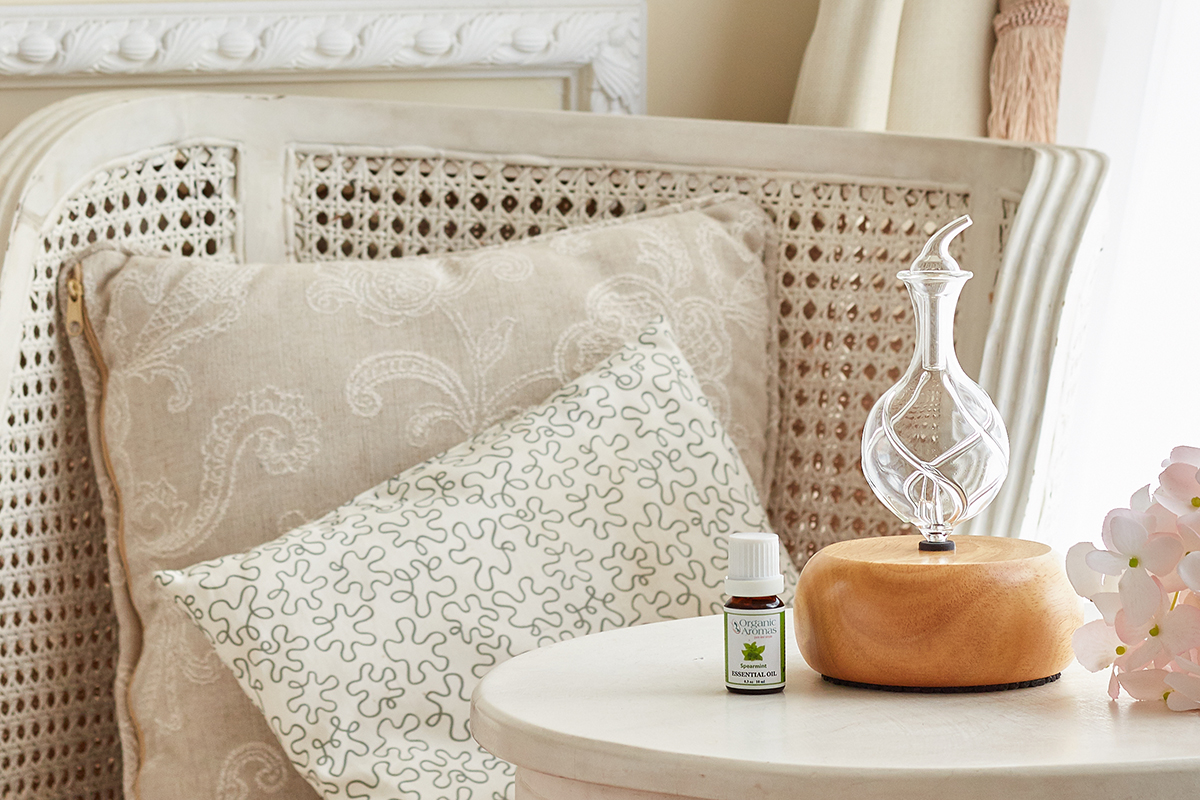
Key Essential Oils That Kill Mold: Top Options and Dilution Guidelines
Let’s talk about oils that fight mold. Many of them break down mold cells and digest spores. You can even see the difference when you breathe them in.
With a waterless cold air nebulizing diffuser (nebulizing is how a fine mist delivers undiluted essential oils), you keep every drop of oil power. It helps you tackle spores floating in the air. And the mist wraps you in a light, pure aroma.
For surfaces, you’ll want blends with exact ratios. Check the essential oil dilution chart to mix them right.
Here are some top picks:
- Tea Tree oil uses terpinen-4-ol (mold-killing molecule). It tears into Candida albicans (common yeast) and threadlike fungi. Its fresh pine scent feels crisp in the air.
- Clove oil has eugenol (natural inhibitor). It shuts down Aspergillus and Penicillium while filling your space with a warm spice note.
- Cinnamon oil carries cinnamaldehyde (fungus fighter). It’s tough on Aspergillus, Candida, and Botrytis and adds a cozy, spicy twist.
- Oregano oil brings carvacrol (cell wall breaker). It digs deep into most common molds and smells herbaceous and warm.
- Eucalyptus oil uses eucalyptol (cooling molecule). It slows Ulocladium and Coprinellus growth and offers a minty breeze.
- Thyme oil holds thymol (cell disruptor). It hits mold walls on contact and fills the room with earthy depth.
- Eucalyptus oil carries limonene (citrus protector). It blocks Aspergillus niger and Penicillium with a bright lemon sparkle.
- Lemongrass oil blends gentle citrus notes to fight mildew in damp laundry or grout.
- Citronella oil stands guard outdoors near doors to help keep mold away.
| Oil | Active Compound | Effective Against | Recommended Dilution |
|---|---|---|---|
| Tea Tree | Terpinen-4-ol | Candida, threadlike fungi | 1 tsp/2 cups water |
| Clove | Eugenol | Aspergillus, Penicillium | ¼–½ tsp per liter |
| Cinnamon | Cinnamaldehyde | Aspergillus, Candida, Botrytis | ½ tsp per liter |
| Oregano | Carvacrol | Various molds | ½ tsp per liter |
| Eucalyptus | Eucalyptol | Ulocladium, Coprinellus | 10 drops per 16 oz |
| Thyme | Thymol | Broad fungi | 10 drops per 16 oz |
| Lemon | Limonene | Aspergillus, Penicillium | 10 drops per 16 oz |
First, dilute each oil in a carrier oil or mix with water before you spray on surfaces. Then, you can also use them neat in a waterless nebulizing diffuser.
Always work in a well-ventilated area and let fresh air flow. And um, don’t forget to test a small patch when you try a new blend.

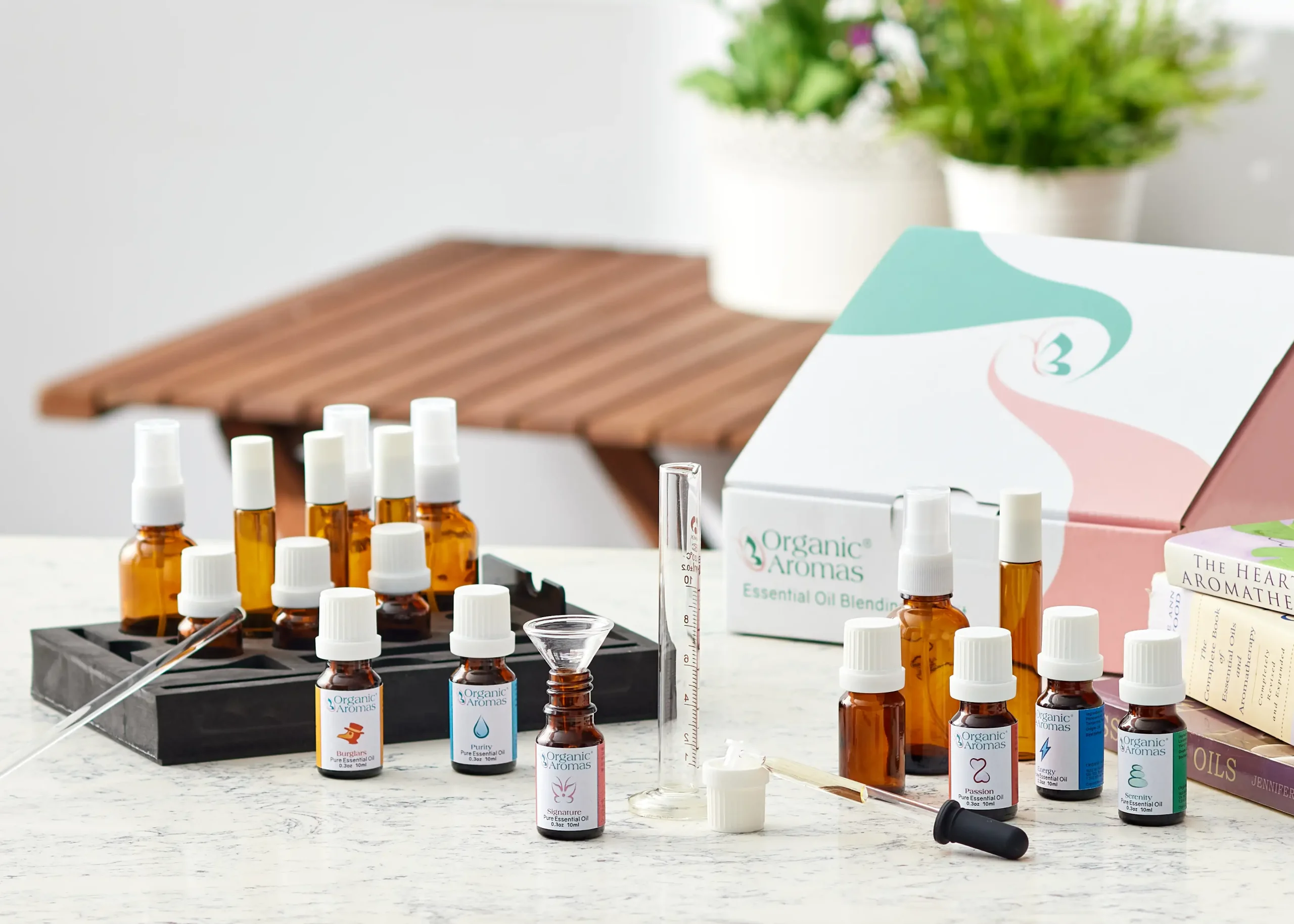
Application Methods for Mold Removal with Essential Oils: Sprays, Diffusion, and Fogging
Have you tried a drop-and-shake mold spray? It only takes seconds. Grab a clean spray bottle and add:
| Ingredient | Amount |
|---|---|
| Water | 1 cup |
| White vinegar | 1 cup |
| Lemon essential oil | 10 drops |
| Tea tree essential oil | 10 drops |
| Cinnamon essential oil | 5 drops |
| Thyme essential oil | 5 drops |
Shake gently. Then mist grout or tile. Let it rest for 10 minutes. Scrub with a stiff brush. Air dry. No rinse needed.
Next, think of your diffuser as a silent waterfall of pure oil molecules. Try the Organic Aromas Magnificent – Nebulizing Diffuser® waterless cold-air nebulizing (how a fine mist delivers undiluted essential oils) diffuser. Place one unit per 1,000 square feet. Run it for 24 to 72 hours. The pure tea tree and lemon aromas drift through the air and chase down mold spores.
Here’s the thing: for a deeper clean, use an essential oil fogger with a Burglars Blend – Clove, Lemon, Cinnamon, Eucalyptus, and Rosemary Essential Oils. Seal the room. Fog and step out for about an hour. The fog grips spores so they can’t hide. When you’re back, open windows and let fresh air in.
Then there’s steam cleaning for grout and other tight spots. Add a few drops of tea tree essential oil into the water tank. The warm steam loosens grime while the oil tackles mold on contact. Slowly guide the nozzle along grout lines. Wipe away any loosened residue.
So spray, diffuse, fog, and steam – four simple steps to natural mold removal that refresh your home. Breathe deep. Feel the calm.
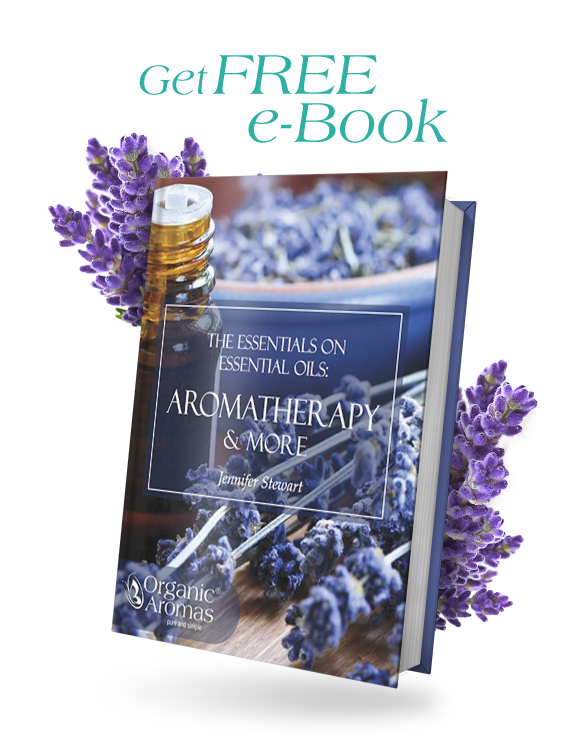
Sign Up to Get Your FREE
e-Book Here…
Safety Precautions and Dilution Guidelines for Mold Treatment with Essential Oils
At Organic Aromas, we’re all about fresh, clean air without any worry. Some oils, like cinnamon or clove, have a bold aroma that can irritate skin or soak into porous surfaces.
When you use a diffuser, keep it out of rooms with kids, pets or people with chemical sensitivities. Worried about oils around your furry friends? Check essential oil safety for animals.
In truth, standard essential oil concentration (the share of pure oil in your blend) is 1 to 3 percent. That’s 6 to 18 drops per ounce of carrier oil (a neutral oil that dilutes essential oils for even mist).
For a child-safe mold spray, stick to 0.5 to 1 percent and try gentler choices like lemon or tea tree oil.
Next, store your oils in dark glass bottles at 50 to 70°F. This keeps the aroma bright and the potency steady. Most pure oils last one to two years, so always check shelf life before you start mold treatment.
When you tackle heavy mold, suit up.
- Respirator mask
- Goggles
- Tyvek or protective coveralls
Then test any new blend on a small patch. A quick spot check shows how surfaces react. Then you can mist your room with confidence.
AromaCurious™ Starter Kit – Choose-Your-Own 5-Pack Essential Oil Sampler (2ml Each)
Essential Oils vs Conventional Mold Removers: Efficacy and Eco-friendly Advantages
Are you tired of harsh mold cleaners that leave your nose burning? Bleach kills mold on contact, but it leaves behind volatile byproducts (unstable compounds that vaporize and irritate lungs). You end up wearing a mask and opening windows. It’s such a chore.
Essential oils work differently. They disrupt mold cell walls and break down mycotoxins (toxins from mold) with a gentle, fresh aroma and no burning fumes. Have you felt how a single breath of lavender eases your mind?
Here’s the thing: DIY essential oil treatments cost far less than professional mold remediation. You cut down on toxic waste, skip complex disposal rules, and even reuse your pure oils again.
Essential oils do more than kill spores on contact. A nebulizer (a device that turns oils into a fine mist) envelopes your room so airborne and surface spores can’t hide. Um, you breathe calm freshness as mold cells break apart under active compounds.
Keep in mind oils won’t extract mold hidden behind drywall or inside vents. They’re best for spot treatments, routine cleaning, or fresh-air boosts. For deep mold issues over ten square feet, call a pro first.
5 Essential Oils That Kill Mold Safely

Have you ever seen mold creeping in a damp corner? We’ve got five natural mold fighters to clear away those spores. They’re tea tree, clove, cinnamon, oregano and lemon oils. Each one brings proven antifungal power, thanks to terpinen-4-ol (a strong mold fighter), eugenol (a spicy plant defender), cinnamaldehyde (cinnamon’s germ banisher), carvacrol (oregano’s warrior) and limonene (lemon’s fresh-clean punch).
And you only need them at a safe ratio to get results. Just mix drops with water, set up your diffuser (how a fine mist delivers undiluted essential oils) and breathe in the crisp, clean air. For exact dilution ratios and surface tips, see the table above.
Final Words
After diving into nature’s top antifungal oils, from tea tree to lemon, you got safe dilution tips and an essential oil dilution chart.
Then we covered sprays, diffusers and fogging to hit mold in the air and on surfaces. We also looked at safety steps, proper ratios, storage and protective gear.
We compared oils with harsh chemicals and saw how oils leave no residues while freshening air.
Finally, we shared easy DIY blends for fabrics, grout and wood. Your home can feel clean, spa-like and mold-free with essential oils that kill mold.
FAQ
Frequently Asked Questions
Which essential oils kill mold on surfaces and wood?
Mold-killing essential oils include tea tree, oregano, clove, cinnamon, thyme, eucalyptus and lemon. They disrupt fungal cells and degrade spores. Dilute each per an essential oil dilution chart for safe surface treatments.
How do I use essential oils to kill mold on surfaces or in the air?
To use essential oils to kill mold, make a spray or diffuse with a 1–3% dilution. For sprays, mix water, vinegar and oils. For air treatments, run a waterless diffuser for continuous gentle mist.
Which doTERRA oils help with mold removal?
doTERRA essential oils for mold removal include Melaleuca (Tea Tree), Oregano, Clove, Cinnamon and Thyme. Each offers strong antifungal properties and works best diluted with water or vinegar for sprays.
Does lavender oil kill mold?
Lavender oil has mild antifungal activity but is usually less effective alone. It freshens air and can help in blends, but stronger options like Tea Tree offer more potent mold control.
Does peppermint oil kill mold and black mold?
Peppermint oil shows moderate antifungal properties and can reduce mold growth. It may help against light surface mold but is not the top choice for stubborn black mold.
Does frankincense kill mold and mold spores?
Frankincense oil has modest antifungal effects and can slow spore growth. It’s valued for its aroma but works best when blended with stronger antifungal oils for full mold removal.
Does oil of oregano kill mold in the body?
Oil of oregano’s carvacrol content offers antifungal support and may help balance yeast internally. Oral use should be diluted and guided by a health professional to ensure safety.
What can I spray in the air to kill mold spores?
To spray the air and kill mold spores, mix water with tea tree or lemon oil at 1–2% dilution and mist a gentle haze. Then run a waterless diffuser to keep spores at bay.

